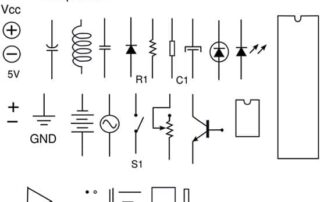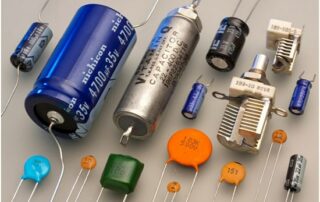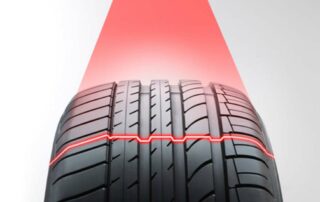Blogs
Capacitor Characteristics
Capacitor Characteristics Capacitors are often defined by their many characteristics. These characteristics ultimately determine a capacitors specific application, temperature, capacitance range, and voltage rating. The sheer number of capacitor characteristics are bewildering. Furthermore, it can be very difficult to interpret and understand the information printed onto the body of a capacitor. Capacitors come in various types or families, and each of these groups has their own identification system and characteristics. Some of these systems are easy to interpret. However, other systems are inundated with symbols, letters, and colors that can be confusing to comprehend. Identifying a capacitor's characteristics typically [...]
Types of Capacitors
Types of Capacitors There are numerous types of capacitors with various functions and applications. Capacitors range from small to large, and each has characteristics that make them unique. For example, some capacitors are small and delicate, such as the ones found in radio circuits. On the other hand, capacitors can be quite large such as those found in smoothing circuits. When making comparisons between the various types of capacitors the dielectric used between the plates is what's typically taken into consideration. The range of capacitors is numerous. Take, for instance, variable type capacitors that give the user the [...]
Capacitors
A Tutorial on Capacitors Introduction A capacitor is a passive electrical component comprised of two terminals. And together with inductors and resistors, they are the most basic components used inelectrical circuits. For a fact, it’s quite rare to come across a circuit that doesn’t have a capacitor. Fig 1: Different types of capacitors Source:Eric Schrader from San Francisco, CA, United States, Capacitors (7189597135), CC BY-SA 2.0 In case you are wondering, capacitors are pretty special because they can store energy, just like an electric battery that’s fully charged. Caps, as we normally call them,have plenty of vital circuit applications. Some of their most [...]
Laser Safety Standards
Laser Safety Standards Handling lasers can be dangerous to the user. That’s why safety measures have been put in place as a form of protection. IEC 60825-1 has become the standard of laser products on an international level and is seen as a common safety standard in countries that belong to the IEC (International Electrotechnical Commission). CDRH The Center for Devices and Radiological Health (CDRH) is a bureau established under the jurisdiction of the U.S. Federal Food and Drug Administration (FDA) of the Department of Health and Human Resources. It has fallen upon the CDRH to regulate manufactured [...]
Warpage and Flatness
When attempting to measure warpage and flatness, you should consider the measurement system being used and the environment where it’s being installed. Always select the right type of equipment during this process. Selecting the wrong kind of equipment can lead to increased man-hours during the production process and insufficient precision. How to Measure Warpage and Flatness Flatness Measurement of Chassis To measure warpage and flatness, you have to determine the difference in height attained by several sensor heads at different locations on the part. In this instance, you won’t experience any measurement errors that are typically caused by chattering [...]



